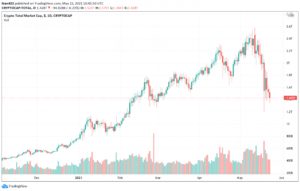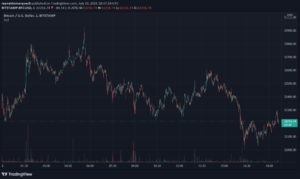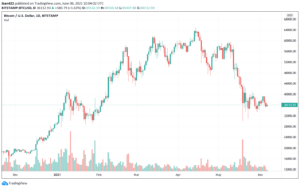Crypto donations have been pouring into Ukranian efforts and have reached almost $70 million. Official reports show how the country has already started to successfully use the financial aid. Meanwhile, the United Nations lags behind with only $20 million in donations that fail to be as transparent as crypto.
Unflustered UN?
On 24 February 2022, the United Nations’ Central Emergency Response Fund (CERF) announced it would be allocating $20 million “to scale up U.N. humanitarian operations in Ukraine following Russia’s invasion”, The Washington Post reported.
“U.N. humanitarian chief Martin Griffiths said the $20 million […] will support emergency operations along the contact line in eastern Donetsk and Luhansk and in other areas of the country, and will “help with health care, shelter, food, and water and sanitation to the most vulnerable people affected by the conflict.”
To say that it was an insufficient amount would be an understatement. Especially after the UN High Commissioner for Refugees, Filippo Grandi, said the following:
“We are looking at what could become Europe’s largest refugee crisis this century. While we have seen tremendous solidarity and hospitality from neighbouring countries in receiving refugees, including from local communities and private citizens, much more support will be needed to assist and protect new arrivals.”
The United Nations Office for the Coordination of Humanitarian Affairs (OCHA) explains that “In an average year, CERF allocates approximately $400 million to 50 different country teams,” and the CERF’s ceiling for each humanitarian emergency is barely $30 million.
Meanwhile, the Ukrainian government and several non-governmental organizations (NGOs) have turned to crypto to receive aid for the fight. Most donations have been in Bitcoin and Ether, reaching almost $70 million as the Ukrainian government expects to hit a total of $100 million in the following days.
This amount more than doubles the one allocated by the UN so far. Even though the organization and its humanitarian partners are raising more funds, the first steps taken seem slow given the magnitude of the problem being faced. The first important amount distributed by the UN being as large as the donation sent by the conglomerate IKEA should be a source of shame.
Moreover, it is not a simple task to track the donations done by or to the UN or any organization that relies on fiat money. This contrasts with the transparency of all crypto transactions.
The open-source of cryptocurrencies like bitcoin and ethereum implies that the coins’ transactions are public, irreversible, and traceable because they are recorded on a single blockchain. This means that the entire history of transactions can be viewed by anyone.
For this, one can use block explorers like blockchain.com or Etherscan. In some cases, companies or projects release reports with certain transactions already traced.
For example, SlowMist has been tracking the total of crypto donations to Ukraine including wallet addresses of the donor recipients, and updating the amounts received daily. Any person can easily copy and paste these addresses to a block explorer and verify the data.
Banks do not allow the public to do that, and donations done in fiat money cannot be recorded in the transparent and public way crypto offers.
Furthermore, it is important to note that the UN and its related agencies could be placing more extravagant funds in the near future. The organization and its partners launched a coordinated emergency appeal for a total of $1.7 billion to deliver humanitarian support to the cause, the UN Refugee Agency (UNHCR) announced.
“The Flash Appeal asks for $1.1 billion to assist 6 million people inside Ukraine for an initial three months,” the website explains. The UN estimated that 12 million people inside Ukraine will need relief and protection and possibly 4 million Ukrainian refugees will be in need of assistance.
The UNHCR adds that “The funding currently available for humanitarian operations in Ukraine is extremely limited, with the 2022 HRP funded with less than $18 million.”
Related Reading | Almost $70 Million In Crypto Donated To Ukraine So Far As War Rages On
How Crypto Donations Are being Used
Crypto has also allowed people to donate to causes and efforts they might have not been able to reach otherwise.
While the UN and several charities carry an unrefutable relevant job to take care of civilians affected by a crisis, the Russo-Ukrainian war has provoked worldwide tension about the macro dangers –to democracy, world peace, human rights, and more– that the outcome of the fight could evolve into.
As American veterans join the fight in Ukraine, many other civilians want to support the efforts in any way they can. For this, crypto donations have been vital.
The TIME reported last week that $15 million of all crypto donations to the Ukrainian government had already been used to purchase military supplies that were delivered last Friday.
Alex Bornyakov, deputy minister of Digital Transformation of Ukraine, claimed that around 40% of the suppliers accept crypto as a form of payment, and for the rest, the payments are done by converting the digital assets to euros and dollars.
Proof that crypto donations have been relevant to the Ukrainian fight is that the ministry is currently working on designing an NFT collection to collect more funds.
Related Reading | The Russia-Ukraine War Is Becoming A War On Crypto

- $400 Million
- 2022
- 7
- About
- All
- already
- American
- amounts
- announced
- appeal
- around
- Assets
- available
- average
- become
- being
- Billion
- Bitcoin
- Block
- blockchain
- care
- cases
- Cause
- ceiling
- Charities
- chief
- collect
- collection
- Communities
- Companies
- conflict
- could
- countries
- country
- crisis
- crypto
- Crypto Donations
- crypto transactions
- cryptocurrencies
- daily
- data
- Democracy
- designing
- different
- digital
- Digital Assets
- Digital Transformation
- distributed
- dollars
- donate
- donation
- donations
- easily
- eastern
- especially
- estimated
- Ether
- ethereum
- Euros
- example
- expects
- faced
- Fiat
- Fiat Money
- financial
- Financial Aid
- First
- Flash
- following
- food
- form
- Friday
- fund
- funded
- funding
- funds
- future
- Government
- Health
- Health Care
- High
- history
- hospitality
- How
- HTTPS
- human rights
- Humanitarian
- ikea
- important
- Including
- IT
- Job
- large
- larger
- Limited
- Line
- local
- looking
- Macro
- Market
- Market Cap
- Military
- million
- money
- months
- more
- most
- Near
- needed
- NFT
- Offers
- official
- Operations
- organization
- organizations
- Other
- otherwise
- partners
- payment
- payments
- People
- private
- Problem
- projects
- protect
- protection
- public
- purchase
- Reading
- receive
- recipients
- refugees
- release
- relief
- Reports
- response
- REST
- Said
- Scale
- Shelter
- Simple
- So
- started
- Successfully
- suppliers
- support
- The Washington Post
- time
- track
- Tracking
- Transactions
- Transformation
- Transparency
- transparent
- tremendous
- Ukraine
- UN
- United
- united nations
- use
- Vulnerable
- Wallet
- war
- washington
- Water
- Website
- week
- What
- working
- world
- worldwide
- would
- year












